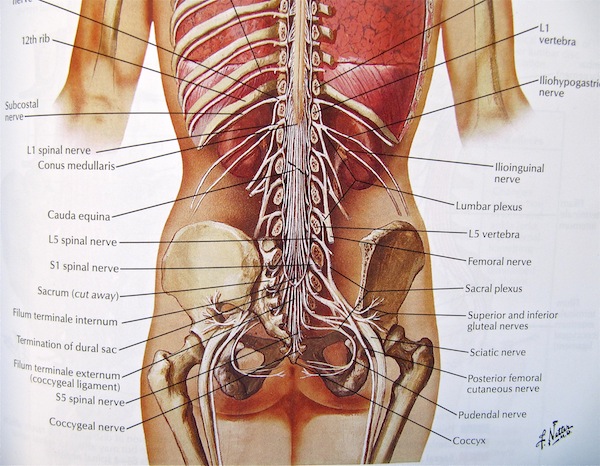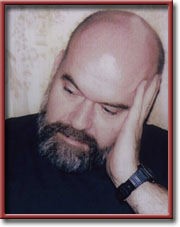Back to the Back
“Three years ago, a relative was ambling down Arthroplasty Ave. (Arthroplasty means bone replacement, in this case, a hip replacement.) Last year, however, she began loitering in Laminectomy Lane. (The lamina is a part of the bones of the back.) It’s the usual complaint of septuagenarians, especially those who are not overly fond of exercise and have not always been especially careful about their diets.” Sanford Rose
Dolors & Sense
By Sanford Rose

 KISSIMMEE Florida—(Weekly Hubris)—3/11/2013—Here’s another bulletin from the junction of Arthroplasty Ave. and Laminectomy Lane, where all good (elderly) Floridians dwell.
KISSIMMEE Florida—(Weekly Hubris)—3/11/2013—Here’s another bulletin from the junction of Arthroplasty Ave. and Laminectomy Lane, where all good (elderly) Floridians dwell.
Three years ago, a relative was ambling down Arthroplasty Ave. (Arthroplasty means bone replacement, in this case, a hip replacement.) Last year, however, she began loitering in Laminectomy Lane. (The lamina is a part of the bones of the back.)
It’s the usual complaint of septuagenarians, especially those who are not overly fond of exercise and have not always been especially careful about their diets. (There is a close linkage between atherosclerotic plaques on the abdominal aorta and lower back problems. See “Starved Backs,” Weekly Hubris, January 2, 2012: https://weeklyhubris.com/starved-backs/.)
It’s officially called lumbar spinal stenosis—back nerves compressed by deteriorating discs, enlarging bones (the joints get bigger in a vain attempt to take over the support role of the shrinking discs) and stretched ligaments.
The nerves in the back furnish energy to the legs. Deprived of that energy by the neural compression, the muscles of the legs scream in pain and begin to atrophy.
My relative has a pain level of about eight on the usual ten-point scale, thanks to compression at lumbar nerve roots 3, 4 and 5.
Off she went to the pain management center, which is a complete misnomer, unless you construe pain management as pain enhancement. These centers start with anti-inflammatory steroidal injections, which may confer some short-term relief, mostly of the placebo type, but in the end serve to aggravate problems. That’s largely because the steroids lead to bone thinning, or osteopenia, a condition to which post-menopausal women are in any case prone.
So my relative got some very temporary relief but also suffered bone damage that militates against the more permanent solution, which is, allegedly, a three-level laminectomy, accompanied, as is usual with back operations of this magnitude, with a fusion to re-stimulate bone growth in the affected area.
Given her hollowed-out bones, there is a real question as to whether any fusion will take.
Of course, there are also serious questions about whether fusion is really the solution to severe spinal stenosis, even in those with well-mineralized bones.
Some 300,000 fusions are done in the USA every year. But many studies find that the back rigidity conferred by these operations leads to increased biomechanical stress at the levels immediately above and below the fusion. Thus, in this case, a fusion at lumbar levels 3, 4 and 5 would increase the probability of disc deterioration both at level 2 and at that below level 5, which is sacral level 1.
Called adjacent segment syndrome, this problem results, in some elderly patient populations, in the need for additional surgery in as many as 40 percent of cases.
In truth, there is no known cure for age-related spinal stenosis. There are only lifestyle strategies for preventing it.

4 Comments
eboleman-herring
Hi, Sanford! Thank you for this. A “60 Minutes” segment last night detailed the deaths and severe illness (meningitis) of patients who turned to spinal steroid injections (tainted with fungus) for some relief from back pain, presumably many of them suffering from stenosis. I, myself, as an “elite athlete” (a medical term, I learned), underwent spinal fusion at age 58 for a back broken at L4/5, and was up walking up stairs the next day, though it took me precisely one year to return to 118lbs and full Yoga strength/flexibility. The lesson is simple and hard: 1) stay underweight; 2) watch your lipids like a hawk (I’m a sashimi-vegetarian); and 3) stay in shape forever. It’s all a matter of repetition and practice. My father died–another elite athlete–at 57, of an aneurysm (which, today, would have been caught in time), so one must still die of something; but I prefer to go out thin, able to touch the floor with both palms, and a bit hungry. WHY can’t America hear, if not learn, this truth? I know you have, you old gym rat, you! :-) Keep teaching us…..
S. Rose
The literature on epidurals is depressing, whether or not the steroid is contaminated. Many people have a short-term benefit, but they may be benefiting from the mere fact of being treated by a doctor, who is supposed to be healing them and who always knows best (of course). Long-term results are not good and, as I point out, often counterproductive. Surgical outcomes have improved. However, the complication rate is still unacceptably high.
eboleman-herring
Sanford, some folks on my Facebook Wall have been writing in re their back issues after reading your piece, and I am referring them back to your other “back columns.” I had an epidural back in the early 90s and realized even then that it was a painful, “icky,” pointless, expensive placebo–a moneymaker for so-called pain management clinics, of which I have a very low opinion. Western medicine goes at the back from utterly asinine directions, with predictable results, when the East learned, long ago, far better approaches: diet, Yoga, acupuncture.
Sandy Anderson
Not the greatest news, but important news, thanks. I do wish I had known all this in my 40s – I think that’s where my disconnect began (bad eating habits, not much exercise, etc). That said, 20 years, 30 pounds, and one broken vertebrae later, I still have hope of relief from The It’s Never Too Late Show. I have changed my diet and I have increased the variety and the breadth of an exercise routine. There is no known cure, true. There are only lifestyle strategies for preventing it AND for improving it to some degree.